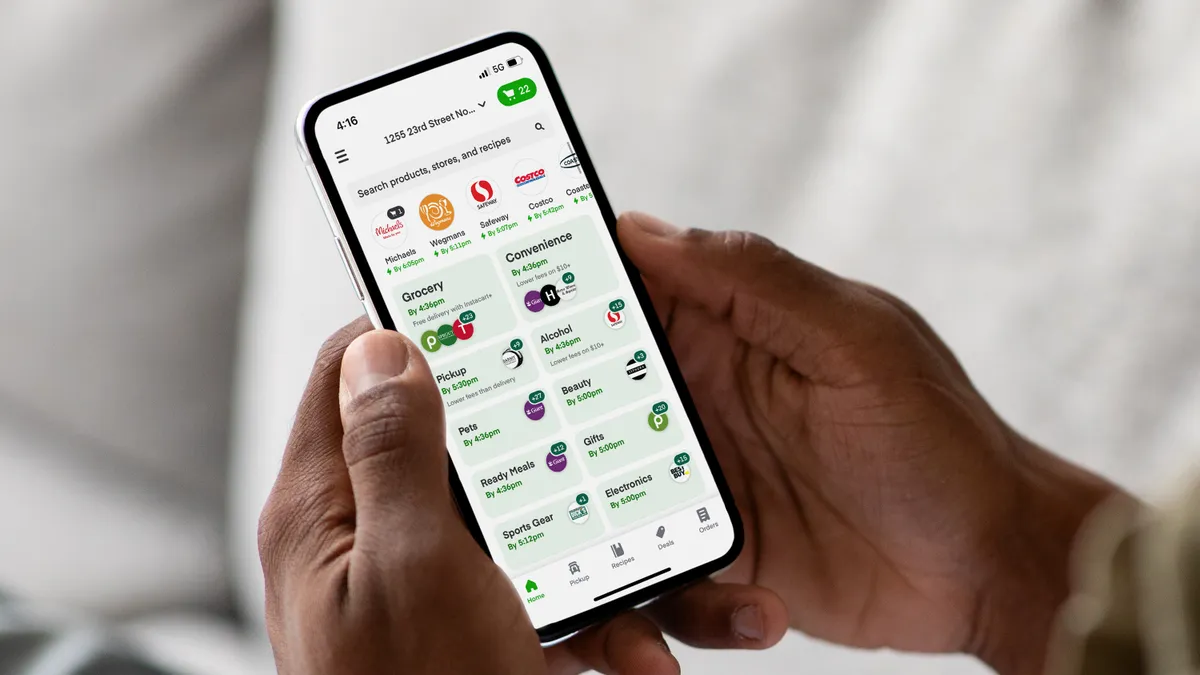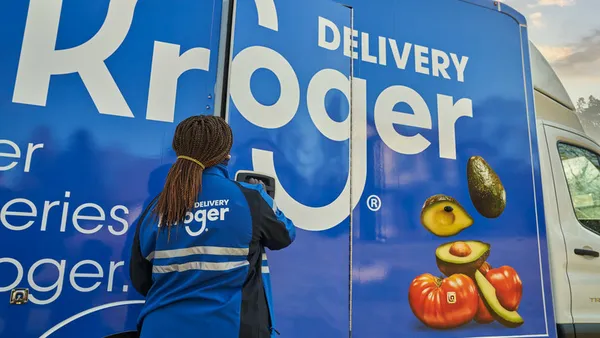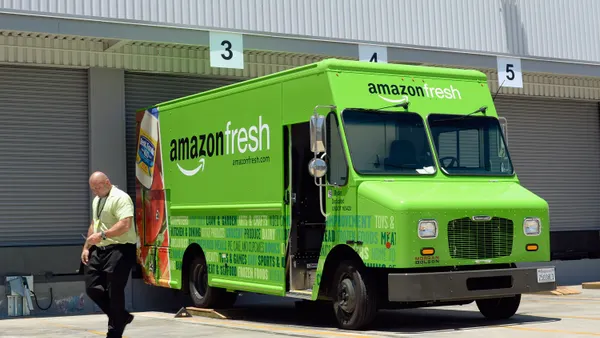Dive Brief:
- Surveyed parents reported a 42% year-over-year increase in grocery e-commerce frequency, per a new report from FMI - The Food Industry Association (FMI).
- As a group, parents are twice as likely (24%) to always buy their groceries online than consumers as a whole (12%), the Back to School report found.
- The findings come at a time when the new school year is starting and grocery e-commerce faces headwinds after surging at the start of the pandemic — giving grocers insight into which consumer groups may find online grocery ordering more appealing.
Dive Insight:
Convenience with grocery e-commerce is a major attractor for parents, FMI’s report noted. People with kids are increasingly turning to online shopping to help save time in their busy schedules, the trade group said.
While primarily online stores are the store of choice for 5% of all grocery shoppers, FMI’s research found that preference jumps to 15% for shoppers with children at home.
The report, which also looked at other shopping habits among consumers, noted that parents are much more likely than other consumers to stock up on grocery staples if extreme weather could happen and that parents are also more likely to buy more bottled water and hydration drinks.
Coupled with the higher e-commerce usage, these findings indicate opportunities for grocers to make certain staples and pack sizes available online and then advertise those items to parents.
While grocers have made numerous investments in boosting their e-commerce capabilities, online grocery sales have slipped throughout 2023 as consumers returned to in-store shopping and high food prices have impacted their spending power. Grocery e-commerce sales dropped 7% year-over-year in July, to $7.2 billion, according to Brick Meets Click and Mercatus. That fall was driven by a sharp decline in order frequency across all fulfillment methods and also a shrinkage in the value of the average digital transaction.
In looking to cater to parents online, grocers may want to be mindful of FMI’s findings that food affordability and inflation are heightened concerns for parents compared to other consumers.
While overall shopper concern about inflation has mostly stabilized since June, households with kids are more worried about grocery store food prices, along with housing and clothing costs, the report found.
More than half (56%) of people with children are concerned about having enough money to buy food, compared to 42% of all shoppers, per the report. Among parents, 41% said they are more worried about this in 2023 while 30% said they are less worried, indicating a divide in affordability concerns.
While affordability concerns for parents exceed those of other consumers, FMI noted the research suggests parents have limited capacity to adjust their shopping tactics to address the pressure of high prices.
“Parents have not found shopping tactics to align with their higher level of concern, and therefore may need special attention, including ways to ensure they can use online options affordably (e.g., apply coupons, minimize delivery fees),” the report noted.
The Back to School report is the fourth in FMI’s five-part series on 2023 U.S. grocery shopping trends. The report used data from an online national sample of 1,969 grocery shoppers between July 28 and Aug. 2, in addition to trended data from the U.S. Grocery Shopper Trends 2020, 2021, 2022 and 2023 studies.











